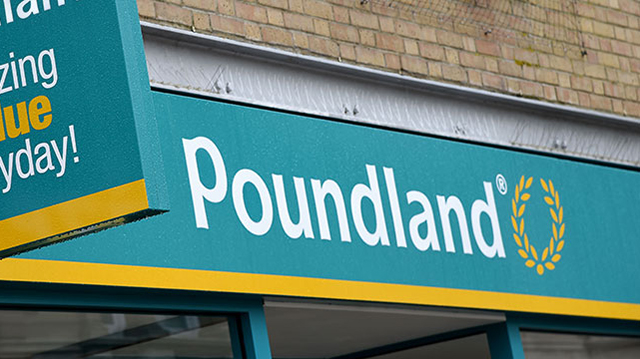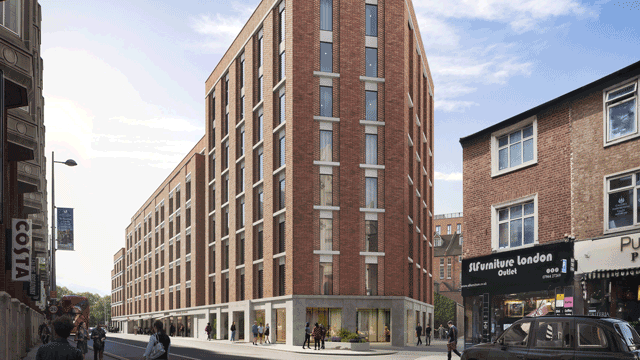Midtown is in the process of forging its own identity. Agents are striving to portray the area as a serious contender in the London property market. Businesses choosing to locate in central London used to have two major choices; the City or the West End. Now there are those agents who are keen to point out that there is another viable central London market, situated in between the two traditional hubs of the capital.
But as Midtown has a way to go to catch up with its neighbours, its identity is still being determined. Is this former no man’s land now seen as a viable location for big businesses, and is its emerging identity helping to attract tenants that would typically choose to move to the City or West End? Midtown now has the potential to carve itself a niche in the central London market, but can and will agents and developers capitalise on this?
Stand-alone market
Some are cautious in pronouncing it a market in its own right. “It isn’t yet a completely stand-alone market,” says Chris Williams Ellis, a director at ATIS REAL Weatheralls. “Midtown still relies to a certain extent on the West End.”
The fact that most agents continue to do business in Midtown from West End or City offices suggests that some still feel that the area has a way to go before it can be seen as its own market. However, there are those who do talk about the Midtown market as an independent entity. “It is not simply a back garden to the West End or the City,” insists Mark Pollitt, partner at Cushman & Wakefield Healey & Baker.
Other agents echo this view, describing Midtown as a prime destination for tenants rather than a contingency location: “It is definitely a viable market in its own right,” says Phil Hobley, partner at Knight Frank.
Firms such as Kinney Green Stanford Webster have chosen to set up shop in the area. The City agent set up its High Holborn office in September 2000. Partner Simon Seymour-Taylor comments: “Midtown emerged during the last boom, during the late 1990s and 2000, and the infrastructure has gradually developed. The office product has improved enormously.”
The character change in Midtown is perhaps most evident along High Holborn. Once a drab corridor running from Shaftesbury Avenue to the City, a number of major refurbishments have given the road a sleek and business-like finish. The Eye on the corner of High Holborn and Procter Street, and High Holborn’s Mid City Place are two examples of modern steel and glass-fronted buildings to appear in the area.
Public sector departments
In the publishing sector, not only has Estates Gazette moved to Procter Street’s Eye, but The Economist is due to move to Red Lion Square. In terms of public sector departments, the Treasury Solicitor’s Department has taken space, boosting the area’s public sector presence. The administrative wing of Great Ormond Street Hospital is also expected to move to the area.
Alistair Subba Row, partner at Farebrother, is confident that Midtown has become a credible location: “Midtown can be seen as a viable headquarter destination.”
With big name corporates moving into the area, some of their business credibility has rubbed off on Midtown’s image. Rosie Woollen, associate director at CBRE, remarks: “The type of covenant in the area is being improved by large corporate tenants coming in, such as those at Mid City Place.”
Companies such as Warner Brothers, Nabarro Nathanson and Cable & Wireless are all found in or around Red Lion Square, and Sainsbury’s and Mitsubishi Corporation are prominent along High Holborn.
Liz Troni of Cushman & Wakefield Healey & Baker suggests that companies that do not need to be defined by their location are choosing Midtown: “Businesses tend to move to Midtown because they are making the decision based on the cost and accessibility, rather than a need to be in a certain area.”
This view is echoed by other agents: “It has always been its own market for those that are prepared to look a bit further afield than usual,” says Peter Gray, partner at Knight Frank. “For example, Goldman Sachs is here.”
Charlie Killen, a partner at EA Shaw, adds: “Tenants are now more footloose, meaning they do not have to be on top of their traditional markets.”
The fact that businesses such as property consultant and developer AYH are choosing to move within Midtown shows that tenants feel comfortable with the area. AYH will move into Chancery Exchange, taking over 34,500 sq ft of the total 81,760 sq ft.
It may not have the prestige of the City, or the same level as vibrancy of the West End, but that has not stopped businesses looking to become Midtown tenants. As more and more tenants move in, the area has taken on a more polished and professional image, and developed its own character. There is now a general expectancy that the market will remain stable and that potential tenants will continue to see Midtown as a viable option.
|
|
|
With Midtown’s resurgence has come an improvement in the local environment. A multitude of shops and amenities have sprung up in the area to cater for office workers, and now offices are never far away from a coffee shop, a mini-supermarket, restaurants and bars. In terms of making Midtown a safer and more pleasant area to work in, the most concerted effort has been seen in the Holborn area. In March 2001, local businesses formed the Holborn Business Partnership (HBP), which is dedicated to improving the environment with a view to making the area more appropriate for businesses. The HBP is urging local businesses to vote yes to the establishment of a Business Improvement District (BID), as early as next year. This would mean local tenants paying an annual levy to the HBP, which will use the funds to improve the local environment. “I think local businesses will say yes to the BID next year,” says Neil Warwick, a partner at Kinney Green Stanford Webster, who is also chairman of the HBP’s Safe and Secure unit. “In return for the levy, we can have better street lighting, cleaner streets, and pay for police overtime. We have worked with Camden council and they have been extremely supportive,” continues Warwick. Others see the improvement to the area to be a direct result of the refurbishment and redevelopment of local buildings. “The BID is a nice idea, but the improvement has come as a result of buildings such as the Eye changing the character of the area,” says Chris Williams Ellis, a director at ATIS REAL Weatheralls. “Developers such as Bee Bee have done a good job of revitalising the area.” |










